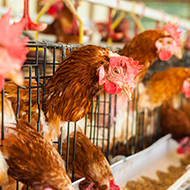Study highlights scale of rabbit dental disease
“This new research highlights a major welfare crisis in pet rabbits caused by dental disease” – Dan O'Neill.
More than one in seven pet rabbits under primary veterinary care in the UK has a dental disease, making it a ‘major welfare concern’ according to a new study from the Royal Veterinary College (RVC).
The researchers also found that being older, male, and having a low bodyweight were significant demographic risk factors for the development of dental problems.
The findings are based on an analysis of patient records from 161,979 rabbits which had been under first opinion veterinary care in the UK during 2019.
The results showed that 15.36 per cent of the rabbits had been formally diagnosed with dental disease. Male rabbits were 1.23 times more likely to have dental disease than female rabbits.
Rabbits that were at least five years old had 7.58 times the risk of developing dental diseases in comparison to rabbits less than a year old. Being heavier than 2kg also led to a higher risk, compared to weighing less than 1.49kg.
However, although previous studies with smaller sample sizes suggested that being lop-eared or brachycephalic were risk factors, the researchers did not find this to be the case.
Charlotte Burn, associate professor in animal welfare and behaviour science at the RVC, said: “Any rabbit can suffer dental disease, and these new findings suggest that owners and vets should particularly watch out for it as rabbits get older, especially if the rabbits are thin and male.
“Interestingly, this very large study didn’t show any association between rabbit head and ear shape and dental disease at all, casting doubt on whether brachycephalic and lop-eared rabbits may be more affected than other rabbits.”
Dan O’Neill, associate professor of companion animal epidemiology at RVC, added: “This new research highlights a major welfare crisis in pet rabbits caused by dental disease. Owners have a legal duty to protect their animals from unnecessary suffering. This can begin with ensuring all rabbits get an appropriate diet of mainly hay and grass.”
The study has been published in the journal Vet Record.
Image © Royal Veterinary College



 An Avian Influenza Prevention Zone (AIPZ) has been introduced across Wales.
An Avian Influenza Prevention Zone (AIPZ) has been introduced across Wales.